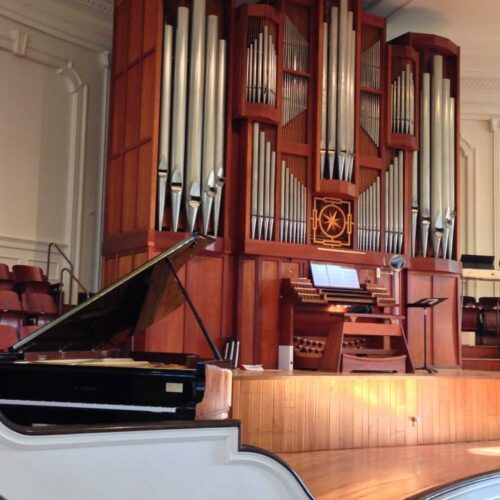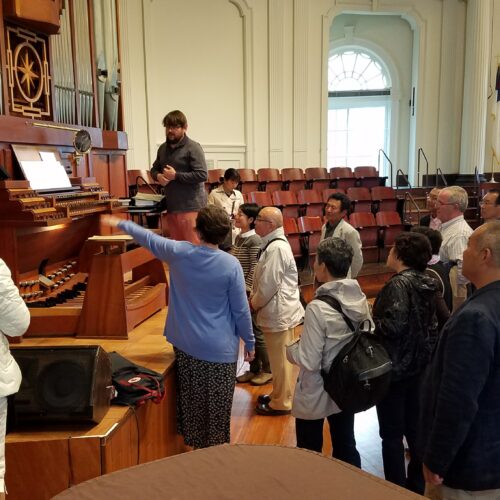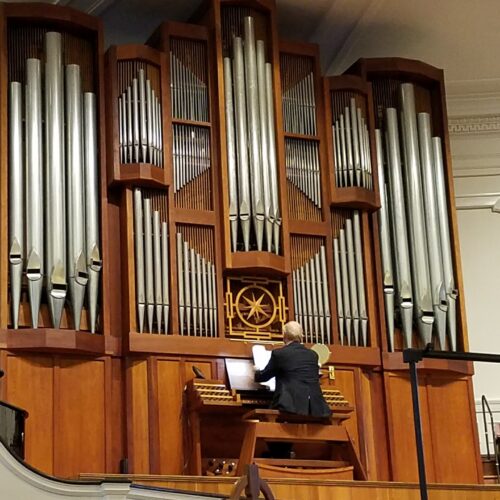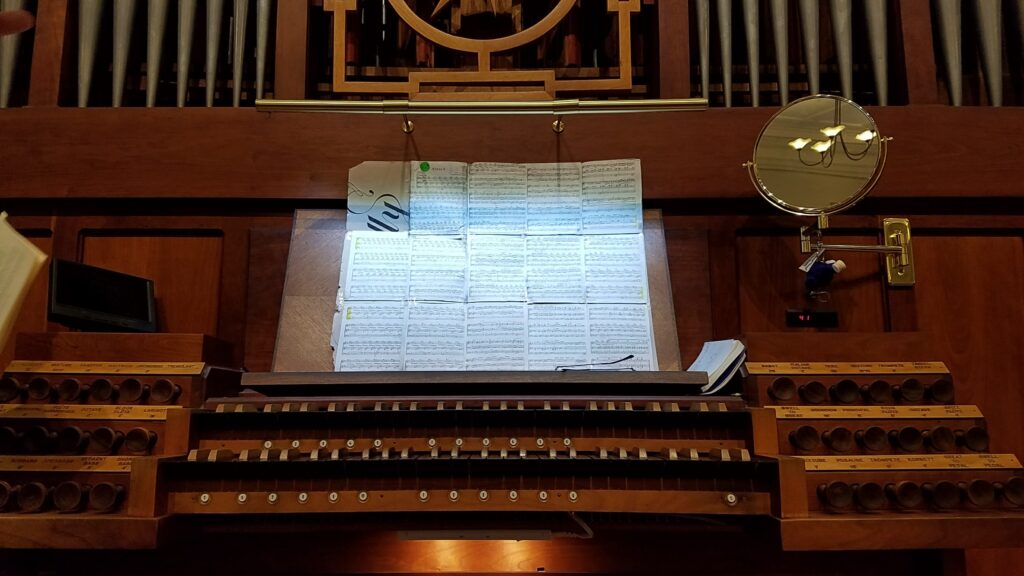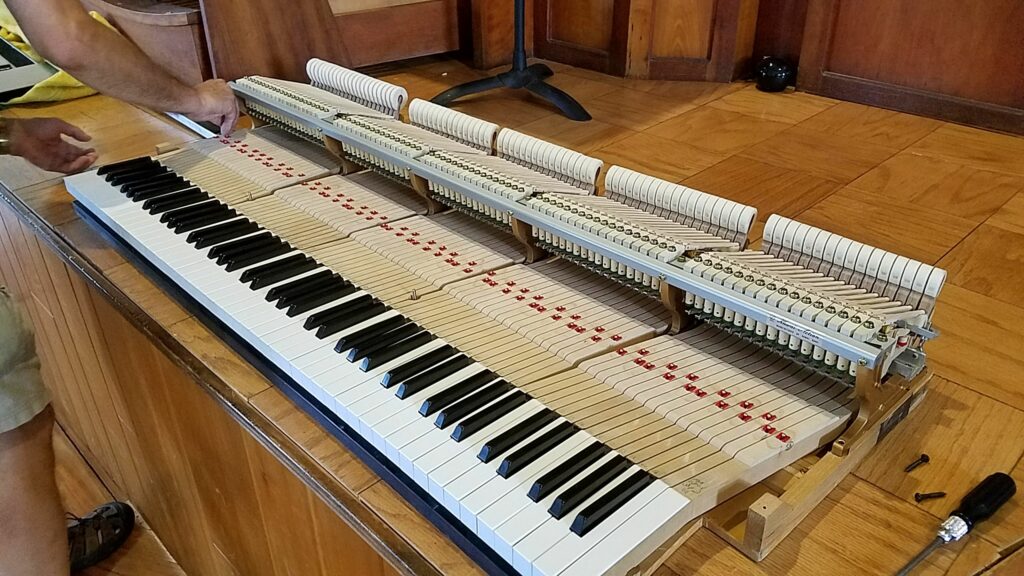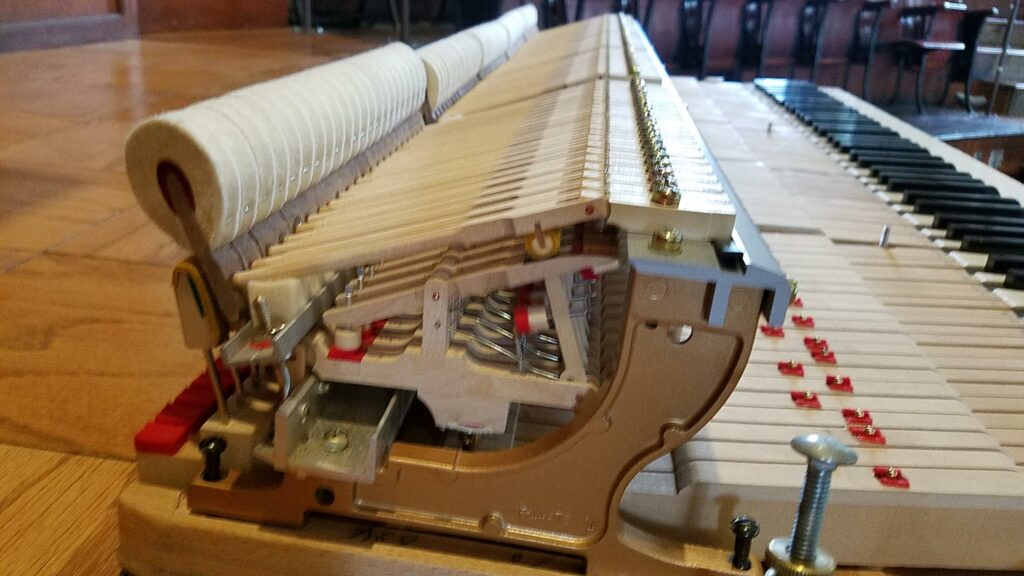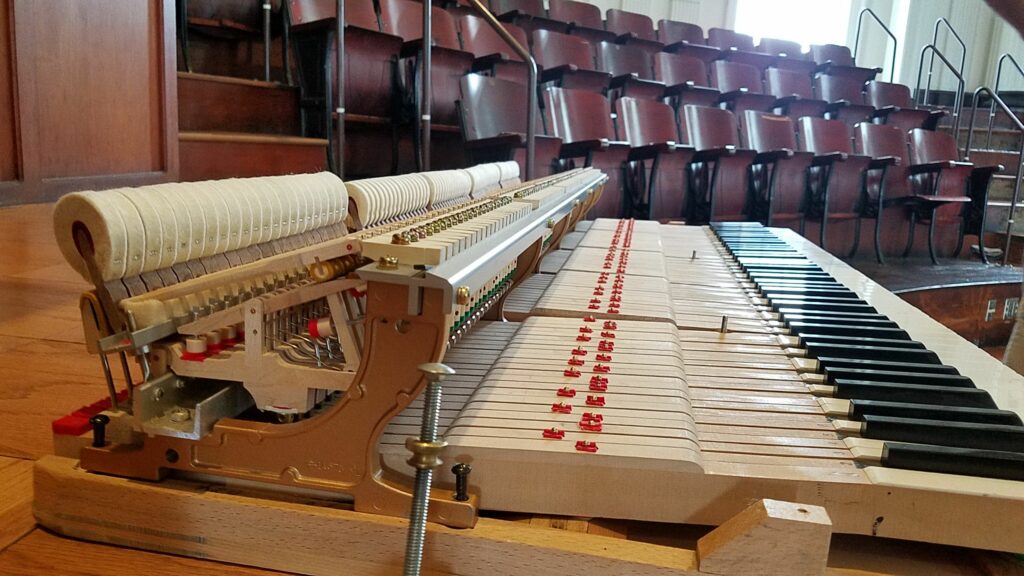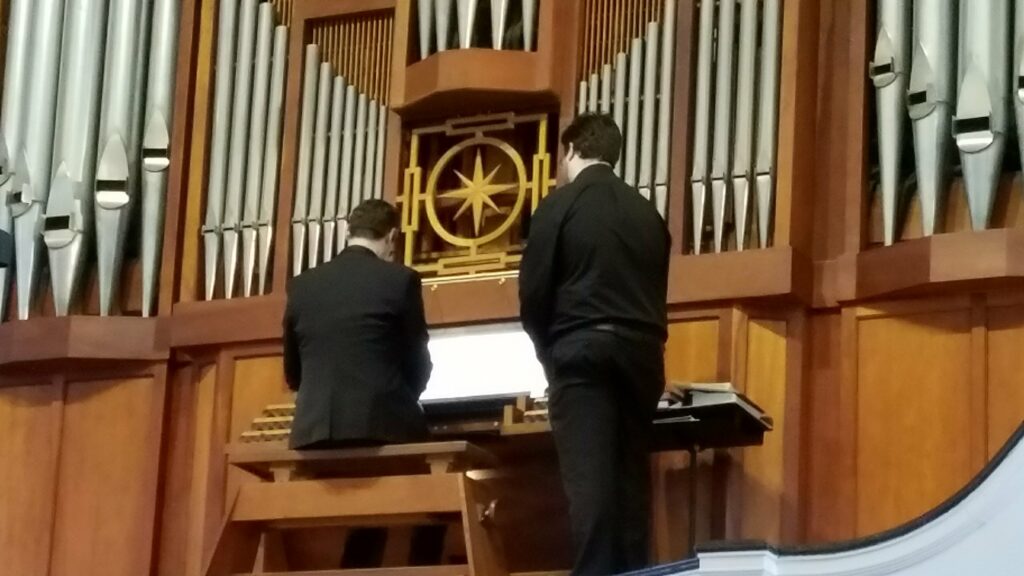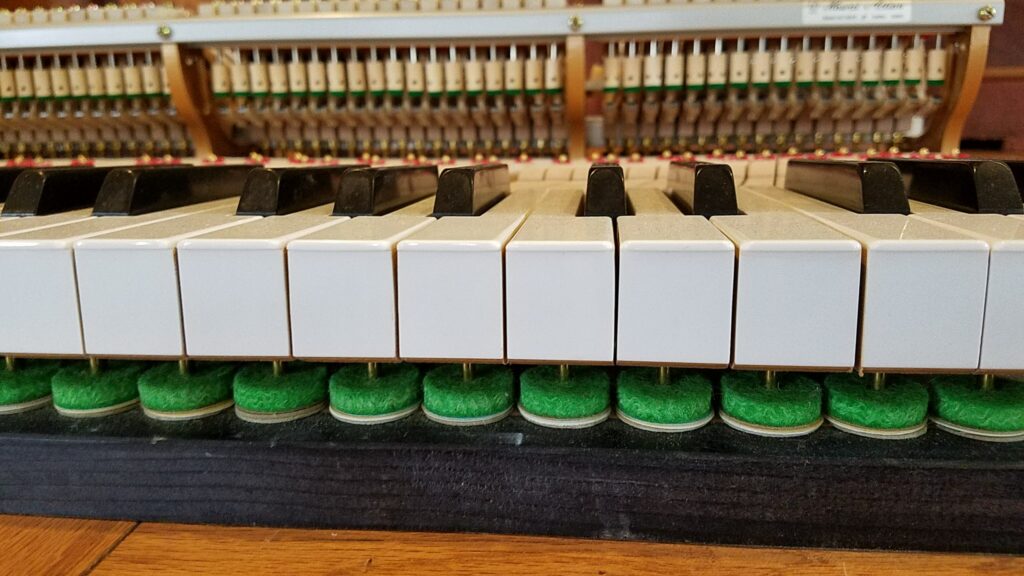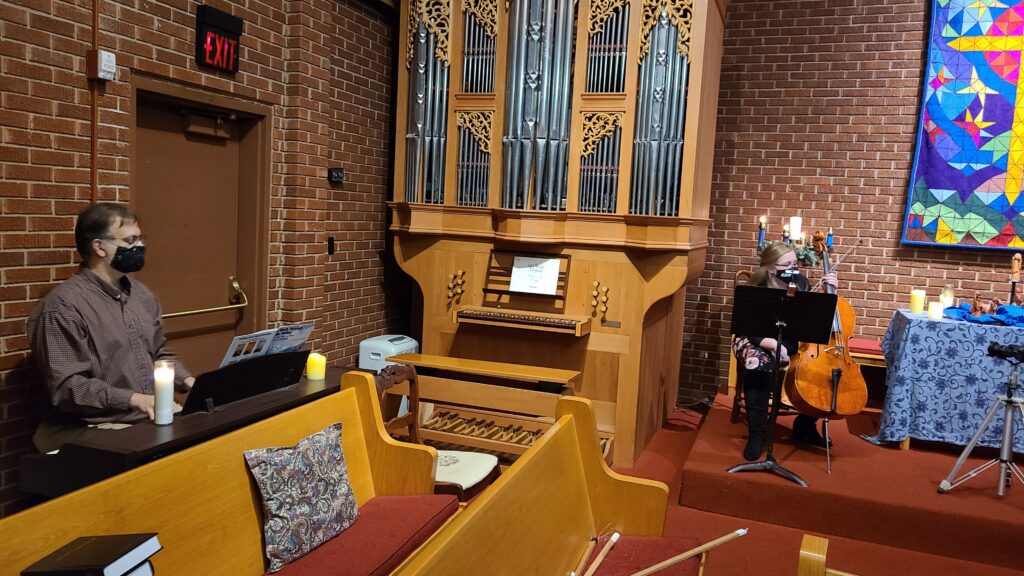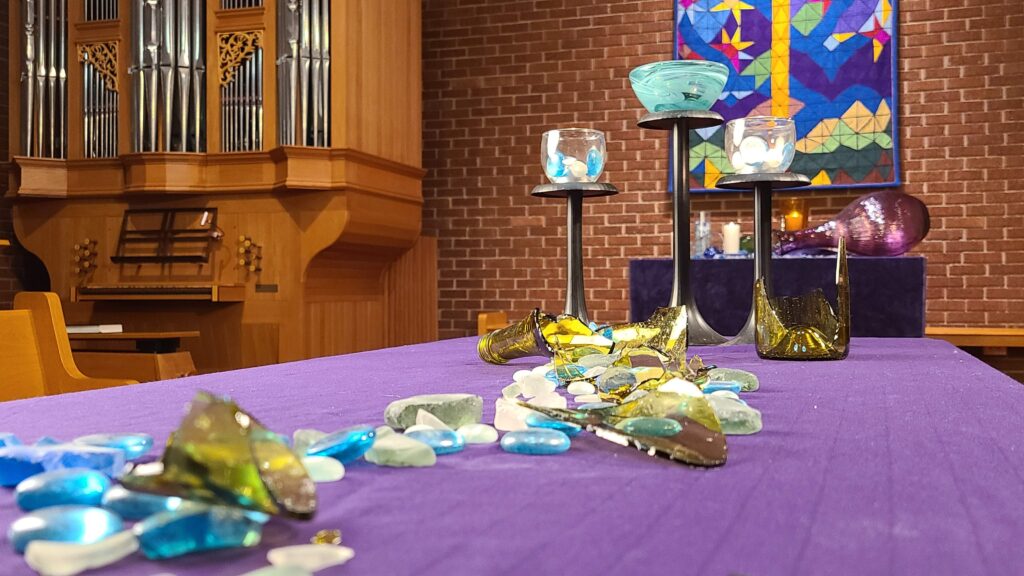The Union Church Organs
Love demands amazing music, and Union Church Berea is blessed with two of Kentucky’s finest pipe organs, located in our Main Sanctuary and in Cowan Chapel. These unique organs have stories behind them that are almost as fascinating as the story of the church itself.
MAIN SANCTUARY ORGAN
Basic facts:
- Installed 1977
- 2,161 pipes (!)
- 31 stops
- 42 ranks
- Two manuals and a pedal
- Woods: grenadil, elm, walnut, cherry
- Metals: stainless steel, aluminum, brass
- Electronic memory system stores groups of stops the organist wishes to use together, so that they can be all changed together with one “piston button.” This system was replaced and updated in 2013; see below for details.
- Specially designed to fit compactly into one space, for a more closely blended sound; this also allows for the action to respond more sensitively to the organist’s fingers.
- Added in 2013 by Webber and Borne Organ Builders, LLC:
- electronic combination action replaced
- includes 128 levels of memory
- Three new reversible toe studs, allowing hands-free coupling of organ divisions
The Story
Since the 1920s, an Estey organ had been serving the church well, but by the mid-twentieth century, the old organ was showing signs of age. An organ fund was established, and in the 1960s, several organ companies were contacted. Could they fix the one they had? Build a new one? No action was taken, and in another ten years, only one-third of the old Estey was working. Union Church is not Union Church without its renowned music program. Something had to be done.
In 1973, an organ committee was formed. They conferred with organ builders in the US and Canada, visited many organs in Kentucky, and chose the Steiner-Reck company, organ builders in Louisville. Here is a paragraph from a little booklet created by the church when the organ was installed in 1977:
“Several committees have worked together on various aspects of the organ: tonal, visual, and financial. Since the original design was conceived, it evolved substantially according to suggestions from the committees at Union Church [and especially from the late John Courter, then Berea College organist, later Union Church organist for many years]. The builders have been responsive and enthusiastic to the changes, and the new organ is the result of that spirit of cooperation. It will be an inspiration in the worship of God and will stand as a tribute to the vision of the congregation of the 1970’s in providing music for many generations to come.” [Bracketed note added. This booklet is unattributed, and may eventually be digitized on our website for “organ nerds” who want to learn every detail about our organ.It also includes important information about who worked diligently on the committees to bring us this lovely organ.]
Even our organ is a physical manifestation of the spirit of unity in which Union church delights.
Further, the principal organ designer, Phares Steiner, is quoted in the booklet as explaining, “Voicing is aimed at making possible the ‘straddling’ of several national types of instrument: the German, French English, and American traditional compositional styles.” One of our former organists, Larry Brandenburg, explained to me that (to oversimplify the matter) basically, the swell (the upper manual) leans toward French style, and the great (the lower manual) leans German.
In August 2013, a most significant improvement was made to the Steiner Organ. After thirty-five years of service, the electronic combination action was replaced after becoming very unreliable. The new system was installed by Webber and Borne Organ Builders, LLC.
The new system includes 128 levels of memory. This means a huge number of pre-set combinations can be stored and recalled. Three new reversible toe studs were added that accomplish something not possible with the original installation. Called “Great to Pedal,” “Swell to Pedal,” and “Swell to great.” These couplers allow the organist a hands-free method of coupling the three divisions of the organ together. Up until this renovation, the organist could only couple divisions by reaching to the far right and pulling a stop knob by hand.
One of everyone’s favorite things about the organ is the zimbelstern (“bell star”)–that pretty star-shaped thing front and center above the manuals. Many Baroque and Renaissance organs featured one, and although modern organs may have one, according to Stiener, “few place it in its traditional position, as has been done in the Union Church organ. When the stop is drawn, the star rotates, causing a series of tiny hammers to strike the various high-pitched bells. The stop is used on festive occasions where the joyous tintinnabulation of the bells is appropriate.”
You are likely to hear the zimbelstern at Christmas and Easter, and other holy days, and it always causes a bit of stir and indrawn breath.
COWAN CHAPEL ORGAN
Basic facts:
- Installed 1984
- 534 pipes
- 8 stops
- 12 ranks
- One manuals and a pedal
- Woods: padouk, elm, ebony, rosewood, white oak, spruce
- Created specifically to fit the small space of the chapel
The Story
The following text is taken directly from the program of the dedication and recital service
The organ of the Scotty Cowan Memorial Chapel was designed and built by Phares L. Steiner and Gottfried C. Reck of Steiner-Reck Organs, Inc. of Louisville, with John E. Courter of Berea acting as consultant for Union Church. Newt Stammer and Dwight Blackburn of Union Church have assisted in numerous details.
The one-manual and pedal organ contains twelve ranks of pipes, comprising eight stops, for a total of 534 pipes. Four of the stops are divided bass and treble at middle ‘c’, allowing the organist to play different tonal combinations with each hand. This increases the versatility of the instrument, permitting the playing of organ pieces conceived for two manuals. Both key action and stop action are mechanical.
The manual keys are of padouk (naturals) and elm capped with ebony (sharps). The music rack is of rosewood. The 30-note pedalboard is straight and slightly concave. The large wooden pipes of the Pedal Subbass are located behind the main case of the organ. The organ case is white oak with carved spruce screens adorning the facade. Within the carving are the gilded initials ‘SDG’, for “Soli Deo Gloria” (“to God Alone the Glory”). This was the motto of Johann Sebastian Bach, who signed his completed manuscripts with these initials. It also serves in our time as the motto of the American Guild of Organists. The gilded numerals ‘1984’ indicate the completion date of the organ. Pipes of the Principal rank form the facade; each of the three towers has at its center a decoratively embossed pipe. The organ is tuned in a well-tempered system (Werckmeister III) which allows the frequently used keys to be more purely in tune than the modern system of equal temperament.
The Steiner-Reck Organ is given to the glory of God and in memory of Scotty Cowan by Mr. And Mrs. Lawson Hamilton of Lewisburg, West Virginia. It has been designed and constructed to support and enrich the worship of God. The superb tonal and visual quality of the instrument will contribute beauty and meaning as we praise God in this lovely Chapel. The new organ assures the continuance of the outstanding musical tradition of Union Church. The benefits of the gift of this organ will be experienced by many generations to come.
